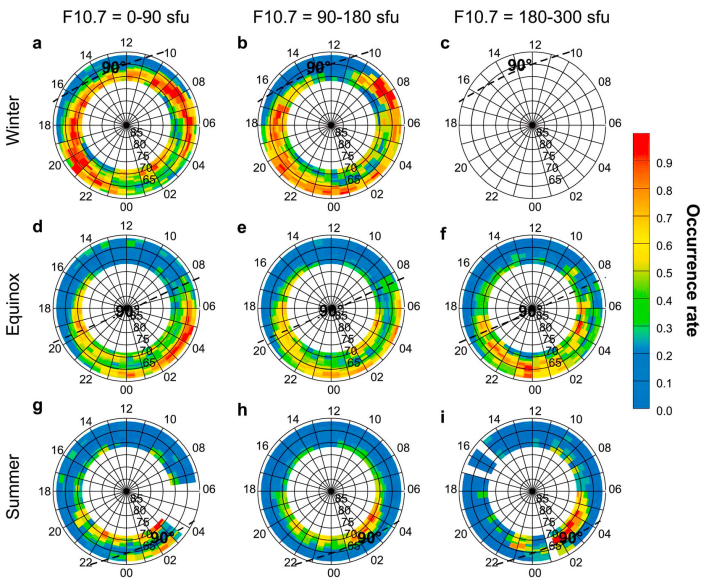Seasonal variation and solar activity dependence of the quiet-time ionospheric trough (Ishida et al., JGR, 2014)2017.2.18
A statistical analysis of the ionospheric F region trough have been conducted, focusing on its seasonal variation and solar activity dependence under geomagnetically quiet and moderate conditions, using plasma parameter data obtained via Common Program 3 observations performed by the European Incoherent Scatter (EISCAT) radar between 1982 and 2011. We have confirmed that there is a major difference in frictional heating between the high- and low-latitude sides of the EISCAT field of view (FOV) at ~73°0′N - 60°5′N (geomagnetic latitude) at an altitude of 325 km, which is associated with trough formation. The statistical results show that the high-latitude and mid-latitude troughs occur on the high- and low-latitude sides of the FOV, respectively. Seasonal variations indicate that dissociative recombination accompanied by frictional heating is a main cause of trough formation in sunlit regions. During summer, therefore, the occurrence rate is maintained at 80 - 90% in the post-midnight high-latitude region owing to frictional heating by eastward return flow. Solar activity dependence on trough formation indicates that field-aligned currents modulate the occurrence rate of the trough during the winter and equinox seasons. In addition, the trough becomes deeper via dissociative recombination caused by an increased ion temperature with F10.7, at least in the equinox and summer seasons but not in winter.
カテゴリ:Ionosphere,Trough

